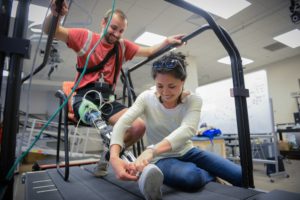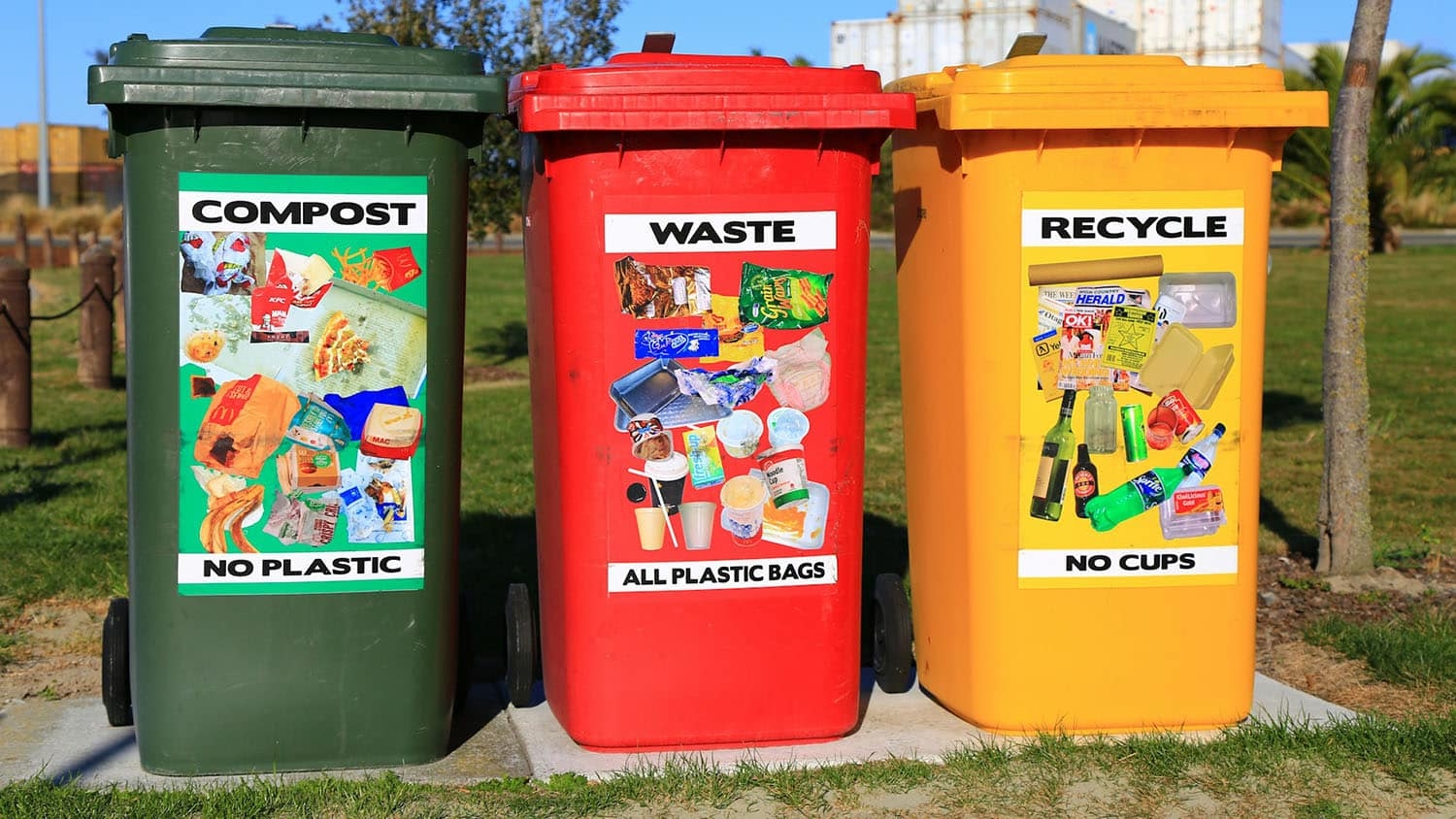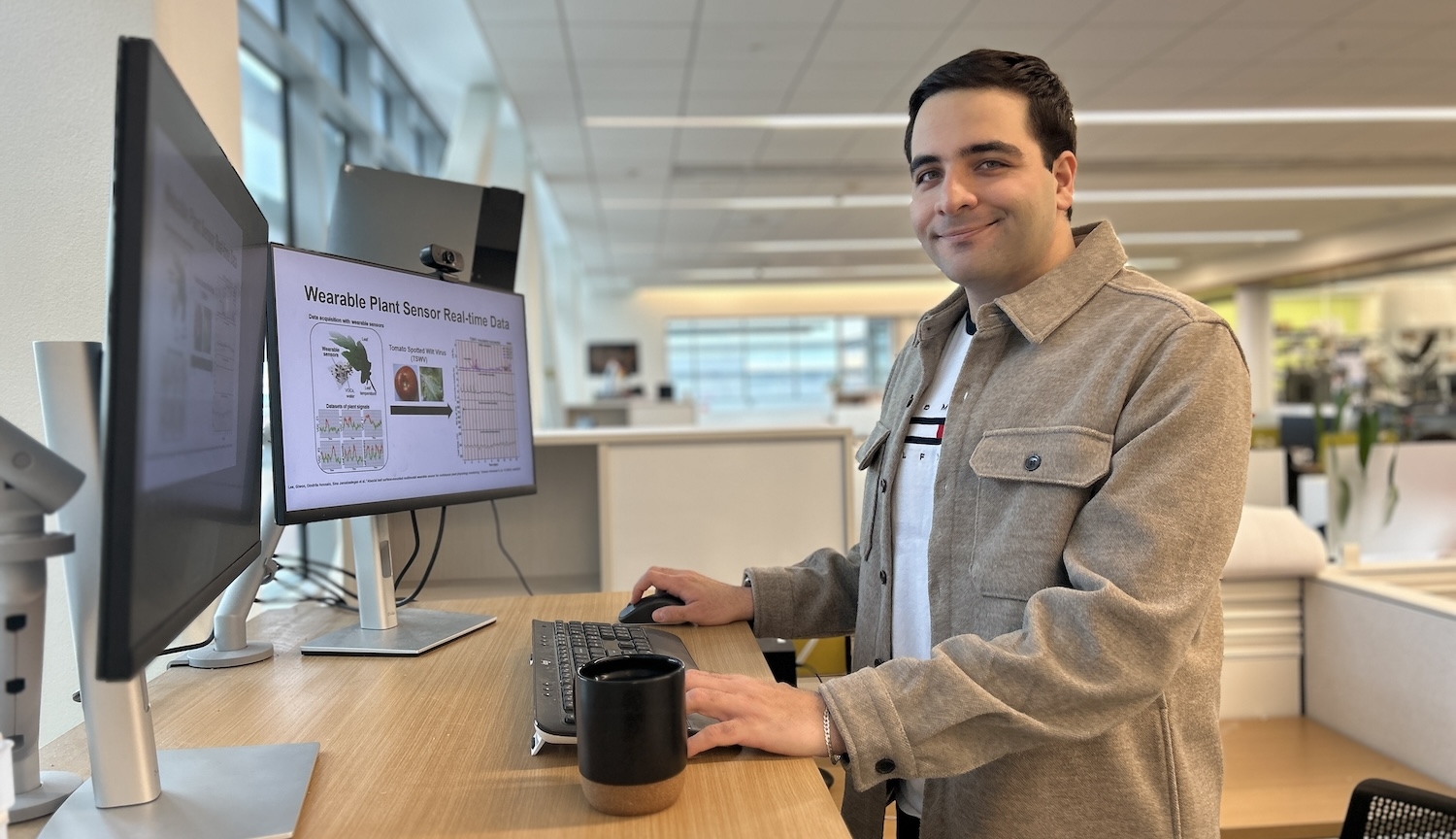Andrea Brandt

When High Tech Bionics Merge with the Human Side of Science in Order to Meet Individual Needs
When lower limb amputees are fitted with a powered prosthesis, a technician sets the device’s performance parameters in a clinical setting where the person is walking on a flat, level surface. But those clinical conditions don’t correspond to all the walking conditions and movements that an amputee will experience in life.
PhD biomedical student Andrea Brandt is studying how above-knee amputees adapt to using a powered prosthesis for activities like carrying a load. She wants to change the prosthetic knee mechanics to relieve amputees from compensating or working so hard when they do carry loads. She hopes that what she learns will allow amputees better mobility and control of movement.
What most amputees want is a prosthesis that is adaptable, allowing them to return to activities they really enjoyed before having a leg amputated, Brandt said. Her goal is to develop prostheses that adapt to the amputee users, rather than amputees having to adapt to their prosthesis—the ultimate bionic leg that can automatically adjust for specific activities and conditions.
Brandt didn’t set out to be a biomedical scholar. After earning an undergraduate degree in math, she took a year off from education to think about what was next for her. She was looking for a field that combined, “a human side and a math side.” Biomedical engineering seemed “one of the most fulfilling ways” to do that, she said.
She chose the Neuromuscular Rehabilitation Engineering Lab, part of the joint NC State-UNC Biomedical Engineering Department. The lab is widely recognized for its gait lab equipment—sort of a high-tech treadmill—that records whole-body movement and evaluates novel control and rehabilitation techniques for prostheses, orthotics, computers and other assistive devices. According to the program’s website, “Our research goal is to improve the quality of life of persons with disabilities.”
Brandt especially enjoyed the opportunity to study at both UNC and NC State. Early in her student career, she actually spent more time at UNC.
“It’s nice to get access to the human, medical side,” she said. “UNC has a great School of Medicine, and NC State has a great engineering program.” Brandt’s human motor control class through the Human Movement Science Department at UNC was one of her favorite classes, and she found it very informative for her work.

So amputees face challenges when walking under different conditions that are not supported by a pre-programmed activity mode, or variations within an activity mode, such as using the “level ground walking” mode or carrying a load like a backpack, small child or groceries. Research has found that even carrying 10 lbs. of groceries can be difficult for amputees, forcing them to shift their weight more to their intact leg. Such shifting can lead to joint and back problems like osteoarthritis, scoliosis and sometimes injuries from falls.
“When people get a prosthesis, they go to the clinic and the clinician will adjust the prosthesis settings for them, and that’s what they’ll use in their daily life,” Brandt said. “They aren’t testing a number of conditions, like people don’t pick up a bag of groceries and see how they walk, or carry their child on their hip. So the first question for us to understand was, does this make a difference, and in what way?”
Last summer, Brandt and her team enlisted help from volunteer amputees who tested an experimental powered knee by walking on the lab’s force-measuring treadmill. Participants were fitted with a weight against their backs that simulated the task of carrying a backpack.
“The amputees give us valuable feedback—how they felt, changes they would like to make with the prosthesis,” Brandt said.
In March, Brandt and postdoctoral scholar Stephanie Huang joined their professor, Helen Huang at the Museum of Natural Sciences’ Science Café, regular discussions by local scientists that are open to the public. They showed the audience different types of prosthetic knees and feet and explained how each can adapt to different activities.
Working with the amputees in the research study is meaningful, Brandt said. “It sounds cheesy, but we’re really helping people,” she said. “Not every lab can actually develop something and test it on the people it’s going to be helping.”
Brandt was inspired by one participant in the study last summer. He later became an intern in the neuromuscular lab, and he hopes to become an engineering student at NC State. “Not only has he helped us gain valuable insight into how amputees use prostheses, but I hope we’ve helped him gain lab experience and research experience,” she said.
The lab research with amputees also helped Brandt recognize individual issues, making the goal of adaptable prostheses more important.
Graduation is still a couple of years away for Brandt. But she continues her research, helping bring life a little closer to routine for amputees.
Read more from the Graduate School’s Think Magazine.
Learn about graduate programs in biomedical engineering.
Download this article as a PDF.
This post was originally published in The Graduate School News.


